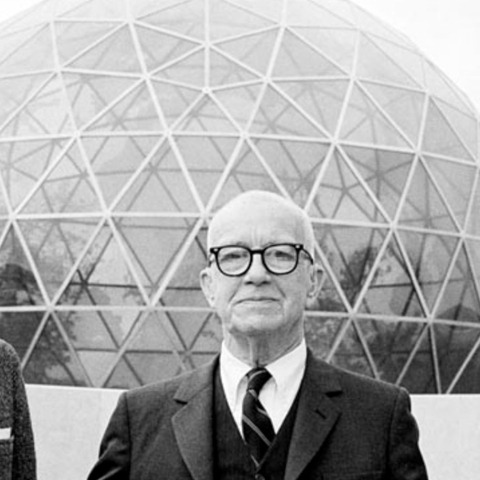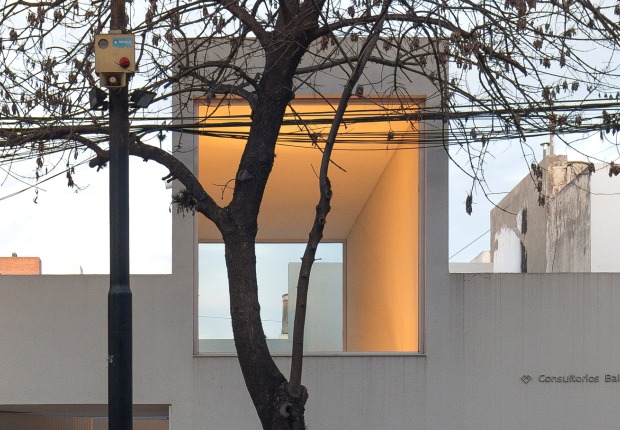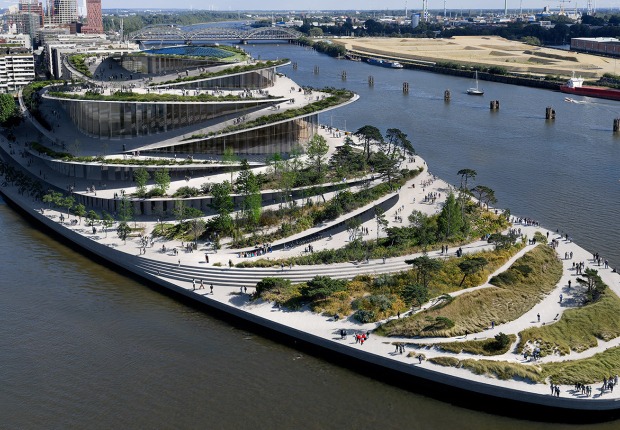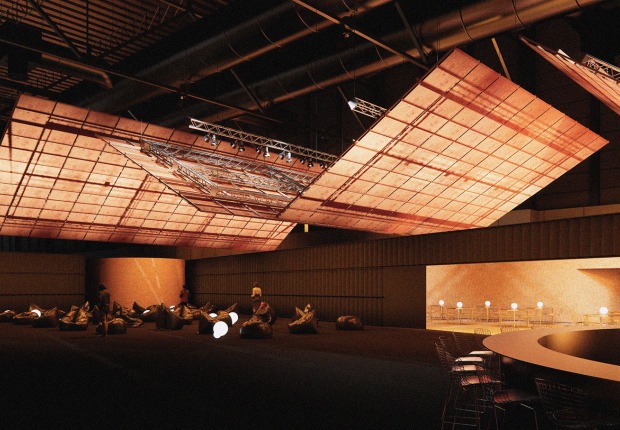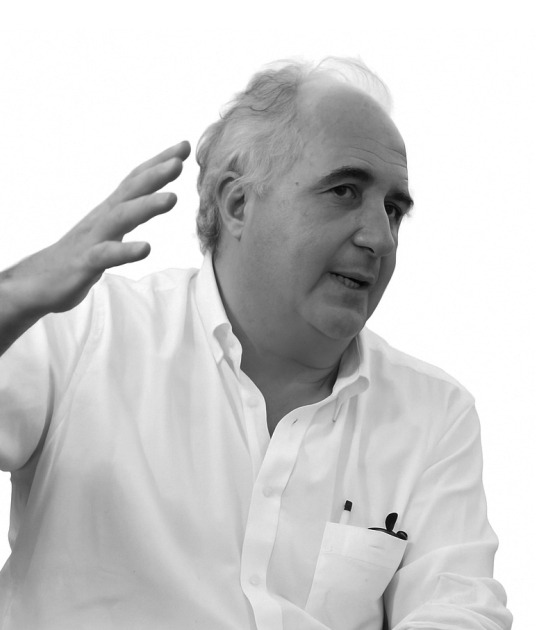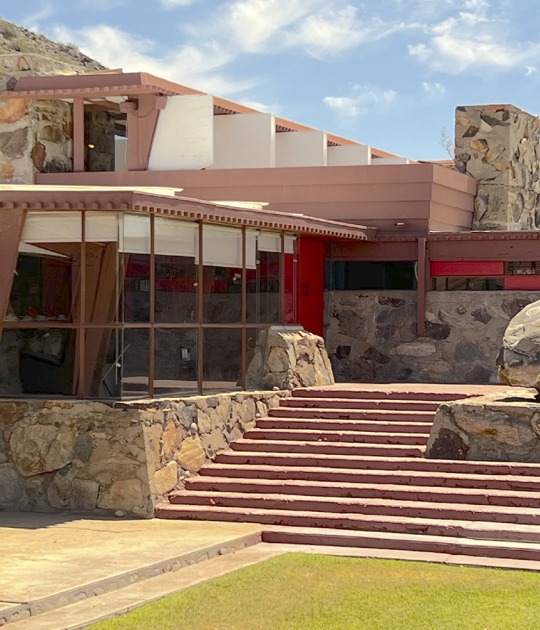Shoji Sadao architect passed away on November 3rd in Tokyo, Japan at the age of 92. His family said the cause was heart and kidney failure.
Shoji Sadao is best known for his decades of work with Buckminster Fuller and Isamu Noguchi, both creative geniuses of the 20th century - one a “design scientist” and the other an artist. He had a central role creating visionary works with both of them from the early 1950s to the 1980s. When he was well into his 70s, Shoji finally had time to reflect on his life and tell his own story. Even then, it was instead to tell the story of his two mentors and colleagues and the extraordinary half-century friendship between them.
Shoji Sadao curated the exhibition Buckminster Fuller, Isamu Noguchi, Best of Friends in 2006 and published a book of the same name in 2011. From the introduction to Best of Friends Shoji captured how unified these two very different evolutionary designers were. Working with renowned graphic designer Tomoko Miho, this book is an artwork unto itself.
He met B. Fuller (d. 1983), while studying at Cornell University, and the two were soon collaborating. Fuller was pursuing out-there ideas in design and architecture, and it often fell to Mr. Sadao to do the practical work of implementing them.
In the mid-1960s they formalized their company, Fuller & Sadao Architects, launching large-scale projects together. Of the two, Bucky himself was not a licensed architect - Shoji was. Marking a high point of these years, Shoji took on the most challenging task as lead architect to design and build Fuller’s most iconic building: the American Pavilion, the Montreal Expo ’67 Dome. Later Shoji helped Fuller flesh out futuristic ideas such as the Triton Floating City Project.
Shoji Sadao is best known for his decades of work with Buckminster Fuller and Isamu Noguchi, both creative geniuses of the 20th century - one a “design scientist” and the other an artist. He had a central role creating visionary works with both of them from the early 1950s to the 1980s. When he was well into his 70s, Shoji finally had time to reflect on his life and tell his own story. Even then, it was instead to tell the story of his two mentors and colleagues and the extraordinary half-century friendship between them.
Shoji Sadao curated the exhibition Buckminster Fuller, Isamu Noguchi, Best of Friends in 2006 and published a book of the same name in 2011. From the introduction to Best of Friends Shoji captured how unified these two very different evolutionary designers were. Working with renowned graphic designer Tomoko Miho, this book is an artwork unto itself.
He met B. Fuller (d. 1983), while studying at Cornell University, and the two were soon collaborating. Fuller was pursuing out-there ideas in design and architecture, and it often fell to Mr. Sadao to do the practical work of implementing them.
In the mid-1960s they formalized their company, Fuller & Sadao Architects, launching large-scale projects together. Of the two, Bucky himself was not a licensed architect - Shoji was. Marking a high point of these years, Shoji took on the most challenging task as lead architect to design and build Fuller’s most iconic building: the American Pavilion, the Montreal Expo ’67 Dome. Later Shoji helped Fuller flesh out futuristic ideas such as the Triton Floating City Project.
One high-profile Fuller design was the United States pavilion at Expo 67, the international exposition held in Montreal in 1967. It was a striking 20-story geodesic dome, one of Fuller’s signature shapes — “a knockout,” The Boston Globe called it.
“Fuller was the face of the project,” Alec Nevala-Lee, who is writing a biography of Fuller, said by email, “but the majority of the design and logistical side was handled by Sadao and Peter Floyd of the Cambridge architectural firm Geometrics Inc.
“Fuller was the face of the project,” Alec Nevala-Lee, who is writing a biography of Fuller, said by email, “but the majority of the design and logistical side was handled by Sadao and Peter Floyd of the Cambridge architectural firm Geometrics Inc.
Sadao filled a similar role with Isamu Noguchi, helping turn his concepts, whether for the Hart Plaza fountain in Detroit or the 400-acre Moerenuma Park in Sapporo, Japan, into reality. They built well-known landscape artworks, sculptures and playgrounds and designed Akari light sculptures.
By 1980, Shoji designed and led the construction of the Noguchi Museum in New York. A year after Noguchi died, Shoji became Executive Director of the Noguchi Foundation Museum and Garden from 1989 to 2003. While there, he worked closely with Associate Director Alexandra Snyder (May), Bucky and Anne's granddaughter, who initiated the museum’s education program. Shoji remained a Trustee of the Noguchi Foundation.
Fuller y Noguchi se inspiraron en el trabajo del otro, pero nunca diseñaron una sola pieza juntos. En cambio, colaboraron por separado, a menudo con Shoji, en algunas de sus obras más destacadas, como Bucky’s Expo ’67 Dome y Noguchi’s Challenger 7 Memorial, un Tetrahelix de 100 pies de altura en Miami.
